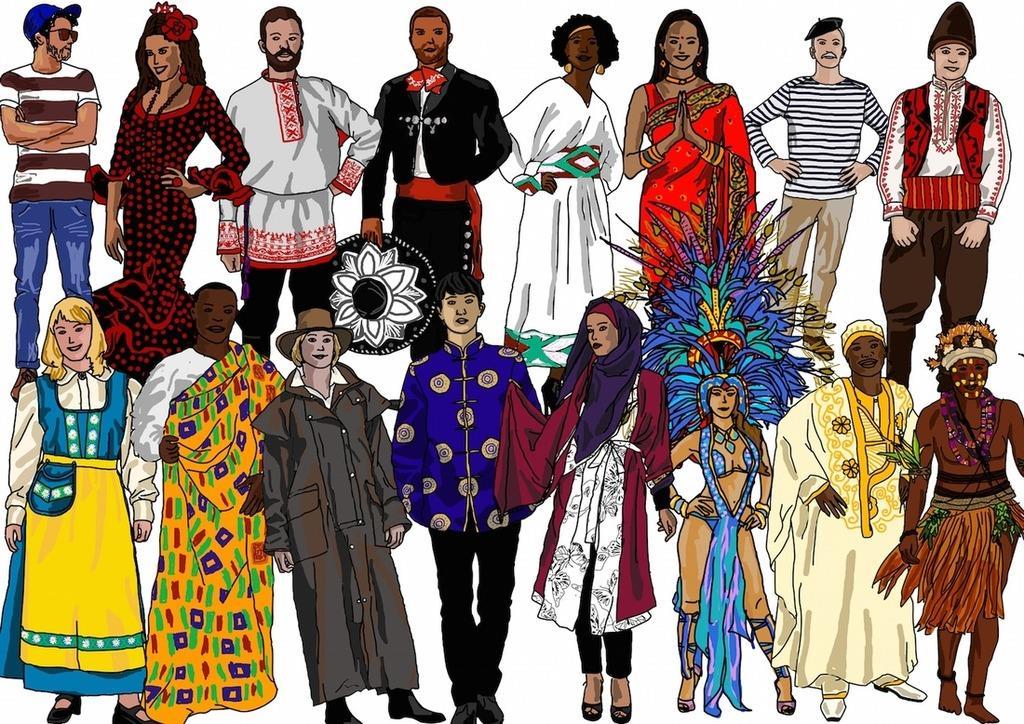In the ever-evolving world of fashion, clothing and accessories serve as more than just items we wear; they act as powerful social symbols that reflect and shape our societal values. From trends that communicate status and identity to styles that challenge traditional norms, the way we dress can speak volumes about who we are and what we believe in. In this article, we will explore how fashion serves as a mirror to our culture, showcasing the intricate ways in which our clothing choices reflect and influence the values of our society.

Exploring the Relationship Between Fashion and Social Values
In today’s society, fashion is more than just clothing; it is a powerful form of expression that reflects and shapes social values. The clothes we wear, the accessories we choose, and the trends we follow all send signals about our beliefs, identities, and priorities. Fashion has the ability to communicate messages about cultural norms, economic status, and even political affiliations.
One way in which fashion reflects social values is through the use of social symbols. Certain clothing items or styles can signify membership in a particular group or adherence to a specific set of values. For example, wearing a religious garment can signal one’s commitment to faith, while sporting a designer label may indicate a focus on material wealth. These symbols help individuals navigate social spaces and communicate their identities to others.
At the same time, fashion has the power to shape social values by influencing how individuals perceive themselves and others. When certain styles or trends gain popularity, they can impact societal norms and expectations. For instance, the rise of sustainable fashion has led to increased awareness about ethical consumption practices and environmental stewardship. By promoting these values through clothing choices, fashion can inspire individuals to reexamine their own beliefs and behaviors.
The Influence of Social Symbols in Shaping Cultural Identity
Fashion has always played a significant role in reflecting and shaping social values. The clothes we wear, the accessories we choose, and the hairstyles we adopt all serve as social symbols that communicate our identity to the world. These social symbols are not just arbitrary choices; they are deeply intertwined with cultural norms and values.
One example of how fashion reflects and shapes social values is through the use of traditional clothing. In many cultures, traditional clothing is not just a fashion statement but a reflection of heritage and identity. By wearing traditional garments, individuals are not only expressing pride in their cultural roots but also asserting their place within a particular community.
Moreover, the way we choose to dress can also influence how others perceive us. Clothing can signal social status, gender identity, religious affiliations, and even political beliefs. For instance, wearing a burqa in some societies may symbolize modesty and piety, while in others, it may be seen as a form of oppression.
The Evolution of Social Symbols in Fashion: From Tradition to Innovation
In the world of fashion, social symbols play a crucial role in reflecting and shaping societal values. These symbols are not just mere accessories or clothing items, but they carry significant meaning and messages that reflect the traditions, beliefs, and values of a particular culture or society.
Throughout history, social symbols in fashion have evolved from traditional to innovative expressions of identity and values. From the timeless elegance of a little black dress symbolizing sophistication and refinement to the bold statements made by gender-neutral clothing challenging societal norms, fashion has always been a powerful tool for self-expression and social commentary.
Today, social symbols in fashion continue to evolve, influenced by a rapidly changing world and shifting cultural landscapes. Designers are pushing boundaries, breaking stereotypes, and embracing inclusivity through their creations, using fashion as a platform to address social issues and promote diversity.
Strategies for Utilizing Fashion as a Tool for Social Change
Fashion has long been recognized as a powerful tool for expressing individuality, creativity, and personal style. However, beyond its role as a form of self-expression, fashion also serves as a reflection of societal values, beliefs, and norms. The clothes we wear and the styles we choose to embrace can communicate a wide range of messages, from our social status and cultural heritage to our political beliefs and environmental consciousness.
Fashion as a Catalyst for Social Change
Given its ability to influence and shape public perceptions, fashion can be utilized as a powerful tool for driving social change. By leveraging the collective power of trends, influencers, and brands, advocates for social justice and equality can amplify their messages and reach wider audiences. From promoting sustainable and ethical production practices to challenging traditional beauty standards and gender norms, fashion has the potential to spark important conversations and inspire meaningful progress.
Strategies for Harnessing Fashion’s Potential
- Collaboration: Partnering with like-minded organizations, designers, and influencers can help amplify social messages and promote collective action.
- Education: Raising awareness about the social and environmental impacts of the fashion industry can empower consumers to make more informed and ethical purchasing decisions.
- Inclusivity: Embracing diverse perspectives, body types, and identities in fashion can help promote inclusivity and challenge harmful stereotypes.
In conclusion, the intricate world of fashion serves as a powerful mirror reflecting the ever-evolving social values of our society. From the colors we choose to the brands we wear, fashion communicates messages about who we are and what we believe in. By understanding the significance of social symbols in fashion, we can begin to decode the complex language of style and gain insight into the deeper meanings behind our clothing choices. As we continue to navigate the fashion landscape, let us remember that what we wear not only shapes our individual identities, but also contributes to the collective tapestry of social values in our world. So next time you pick out an outfit, consider the story it tells and the impact it has on the larger cultural conversation.

